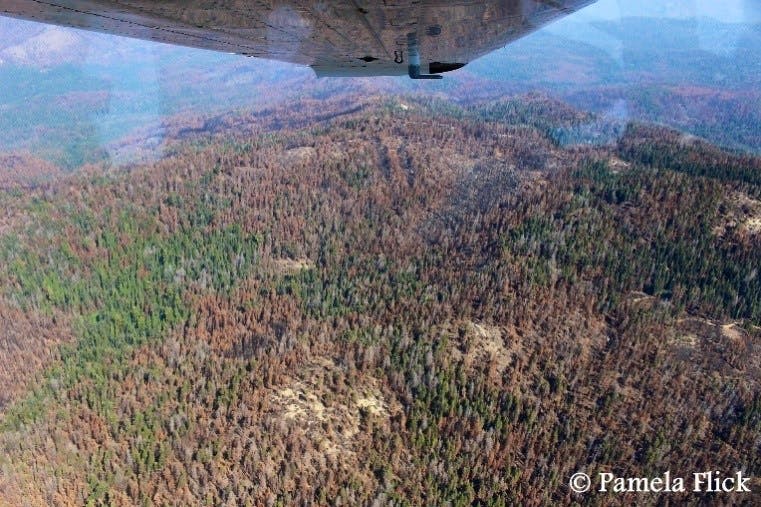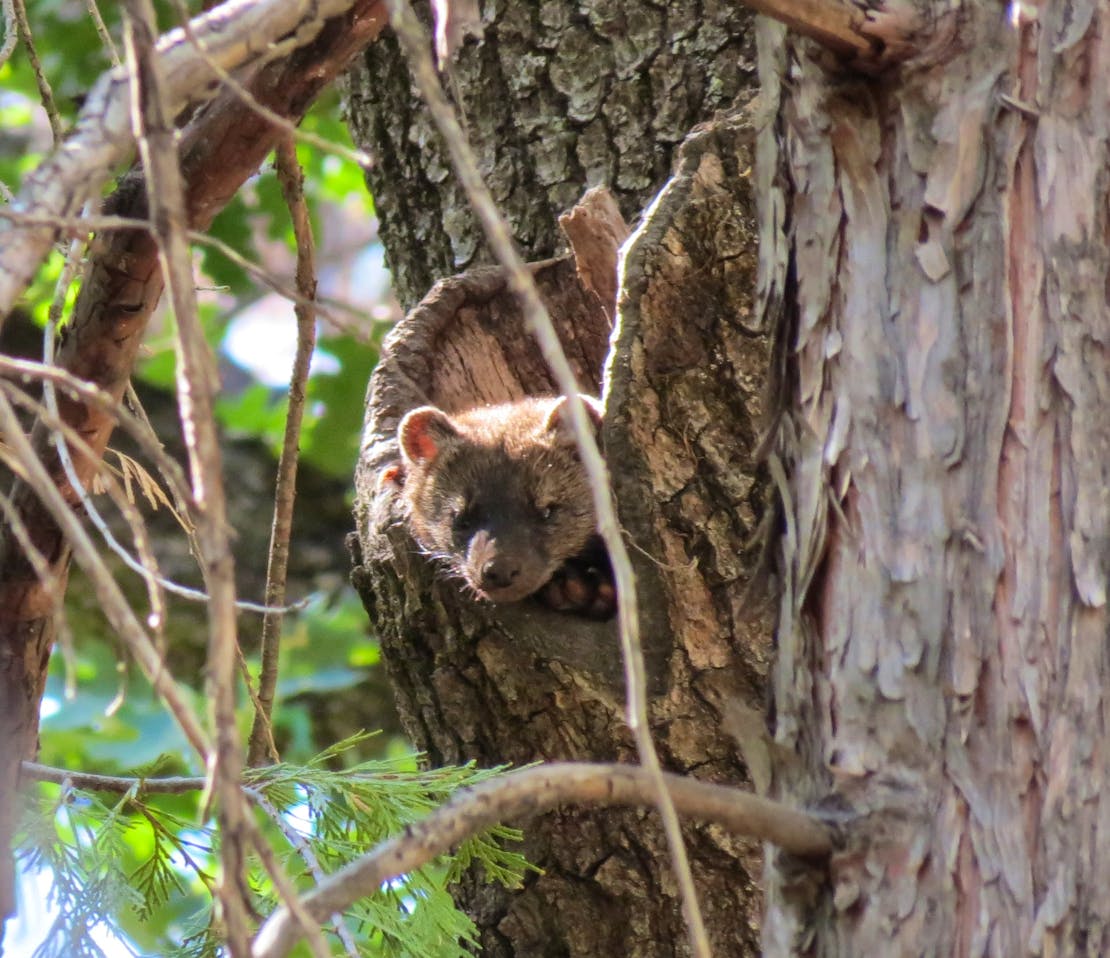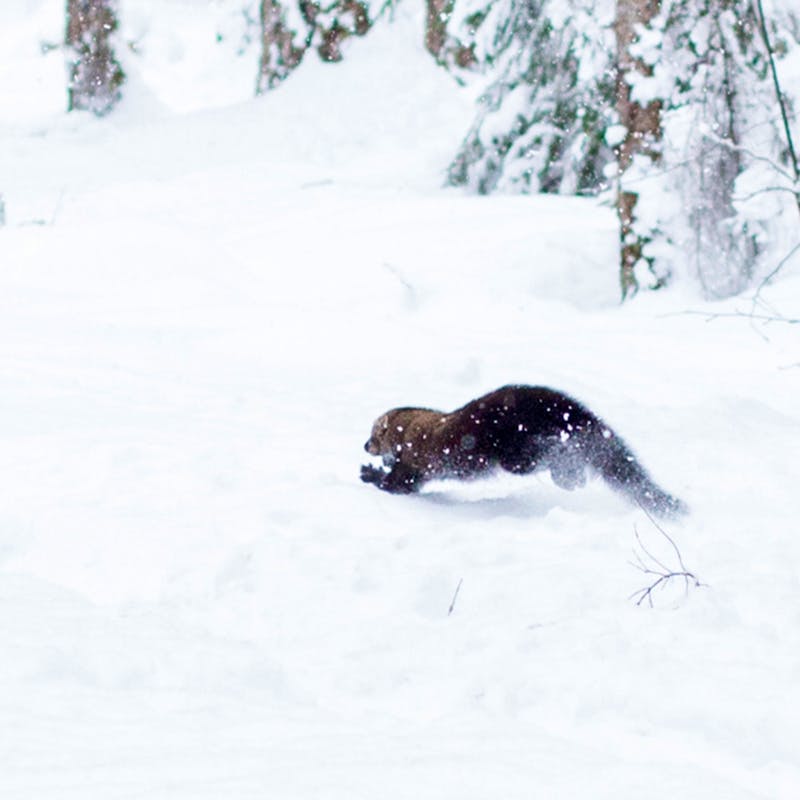Wildfire has been an important natural process helping to shape ecological communities in California for millennia, but recent wildfires have burned outside of their natural range of variation and doing far more damage than good.
Various ecosystems evolved with the typical pattern of wildfire in the area, called a fire regime. Each historical fire regime experienced varying fire frequencies, seasons, intensities, sizes and patterns. The mix left a mosaic effect, which helped limit damage from uncharacteristically large, out-of-control, wind-driven wildfires.
Today, California is experiencing more of the latter with wildfires occurring year-round. The difference is linked to climate change impacts including drought, drought-induced native insect-caused tree mortality and extremely high and dry winds. Additionally, more than a century of unsustainable logging of the largest, most fire-resilient trees coupled with aggressive wildfire suppression in fire-dependent ecosystems have contributed to conditions ripe for large, severe wildfires. Further logging of old growth would be directly harmful to species relying on this habitat and would exacerbate climate change by removing the most important trees for carbon sequestration.
California’s Sierra Nevada, for example, has experienced dramatic changes over the last 15 years. From 2011 to 2017, the region had a particularly severe and prolonged drought with extremely high temperatures and record low precipitation and snowpack. These conditions caused a massive, rapid increase of native bark beetles. The combination of drought-weakened trees and an abundance of the tree-killing beetles resulted in more than 130 million dead trees in the Sierra Nevada. The forest as a whole was left more susceptible to wildfire.
This region is also home to the endemic Southern Sierra Nevada fisher (Pekania pennanti), a genetically distinct species found nowhere else on Earth. These weasels are listed as threatened under the California Endangered Species Act and as an endangered Distinct Population Segment under the federal ESA due to the numerous threats they face. These threats include climate change, rodenticide poisoning from illegal marijuana cultivation, vehicle collisions, and habitat loss from tree mortality, wildfires and logging. Most alarmingly, roughly half of this fisher’s suitable habitat in the Southern Sierra Nevada region — the only area this subpopulation lives in the world — has burned since 2012.
Are fishers equipped to survive wildfires?
Most wildlife can usually survive a fire by fleeing or finding shelter. Wildfires historically would not have significantly dominated the landscape or made miles-long runs in a matter of minutes, so wildlife could escape the flames and fire front. But wildfire behavior is changing, although there are often still some green patches of low-severity or no burning at all within large fire footprints. We can hope at least some wildlife, including fishers, can seek refuge in those areas during uncharacteristically large wildfires.
What happened to Southern Sierra Nevada fishers’ habitat during recent fires?
The Southern Sierra Nevada fisher population is concentrated within a narrow elevational band in the central and southern Sierra because they rely on mixed conifer forests, which vary in elevation and width depending on latitude. Fishers are found throughout this region from about 3,200 feet to 10,300 feet.
In the midst of severe drought, the Aspen and French fires burned opposite sides of the same river canyon in the Sierra National Forest in 2013 and 2014, respectively. These fires severed a critically important, yet extremely narrow, habitat linkage that fishers were known to use to move from the southern portion of the forest to the north, facilitating important gene flow.
Many other large-scale fires burned adjacently in the Southern Sierra Nevada fisher range, leaving a large swath of previously suitable habitat no longer inhabitable for the species.
One of the most significant blows to the fisher’s habitat and population was the Creek Fire. This wildfire burned nearly 380,000 acres between September and December 2020. The area hit was long thought to be one of the strongholds of the Southern Sierra Nevada fisher population, impacting the species’ critical habitat with a high-severity fire.
What’s next for Southern Sierra Nevada fishers?
The substantial changes to the landscape necessitate an update to the Southern Sierra Nevada Fisher Conservation Assessment and Strategy. The Assessment (2015) summarized the best available scientific information on fishers, their habitats and threats at that time, while the Conservation Strategy (2016) provided guidance on management actions to reduce threats and increase the quality and resiliency of fisher habitat. These are the primary tools used to understand this distinct population and how to recover it.
What can our readers do to help lessen the impact of wildfires in the future?
Residents in California or other regions where wildfire threatens communities should make their homes and properties as fire resilient as possible. “Harden” homes by using fire-resistant building materials for roofs, siding, decks and porches. It’s also important to create a buffer zone around the property with well-maintained fire-resistant plants. This up-to-200-foot space can slow or stop wildfire from spreading and will give homes an extra layer of defense.
Everyone should be fire-wise when visiting and recreating on public lands. Check the local conditions before visiting and familiarize yourself with any seasonal fire restrictions that may be in place. When it’s hot, dry and windy, the conditions are prime for wildfire! So, avoid any activities involving fire or sparks. Even when the weather conditions are good, make sure to build and extinguish campfires properly. This includes selecting a spot away from flammable materials, always monitoring your campfire, and dousing the site with at least two full buckets of water and checking for any lingering embers before leaving.










